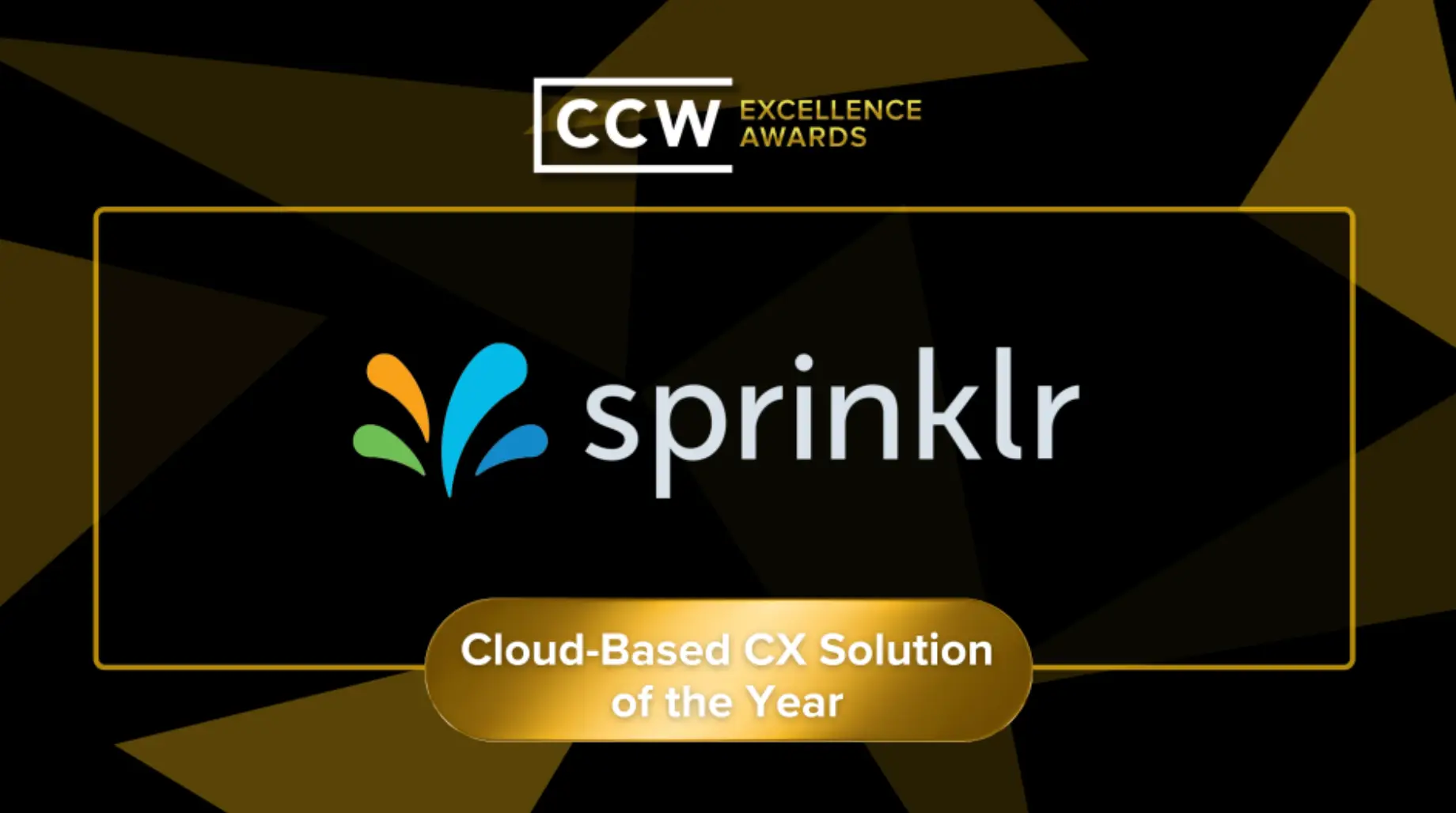The next generation of CCaaS is here
Digital-first customer service, enterprise-scale voice support. Redefine customer service with an AI-powered platform that unifies voice, digital and social channels. Power channel-less interactions and seamless resolution no matter the channel of contact.

Contact center AI maturity model: How to move the needle of digital transformation toward an AI-driven organization? (Part-1)
In a VUCA (Volatile, Uncertain, Complex, Ambiguous) world customers are increasingly reaching out to customer support teams. For example, during the pandemic, incoming calls and escalations rose by over 300% in the contact centers. A Middle East-based telco uses AI-driven virtual assistants— which can communicate in different Arabic dialects as well as in English— to deftly handle some 1.65 million customer calls each month.
More brands are investing in AI for customer service to aid quick resolutions and address such high volumes of queries. Gartner predicts that one in 10 agent interactions will be automated by 2026 using conversational AI, reducing 95% of contact center costs.
In this upcoming blog series, we delve deeper into the concept of contact center AI and how AI maturity impacts contact centers.
Top 3 challenges faced by contact centers
Here are the three key challenges faced by contact centers.
1. Evolving customer preferences
The pandemic acted as a digital accelerant and has caused a dynamic shift in customer preferences. Additionally, customers prefer and consume content in different formats. Different generations of customers have left a huge digital footprint and left brands to deal with many petabytes of structured and unstructured data.
2. Lack of personalization
Due to limited visibility into a customer profile, care agents offer generic and relatively less helpful responses to customers. Siloed customer view results in a lack of personalization.
3. Fragmented AI solutions
Fragmented AI solutions are expensive, difficult to use, and have limited reusability. An average contact center uses multiple-point solutions, making it difficult to understand the customer, their journey and preferences in entirety.

Know how to assess your AI maturity
AI maturity model provides an organization with a framework for assessing its current AI readiness and capabilities. The data and analytics maturity model gives the organization valuable and actionable data to prioritize investments toward AI technologies, skills, and processes needed to develop, manage, and maintain AI-based systems, including mitigating any potential risks associated with their development and use.
Accenture suggests that only 12% of organizations can be categorized as AI-mature organizations which will double down by 2024. In the pre-pandemic era, AI mature organizations recorded 50% higher revenue than their peers.
Given the importance of AI in customer service, Sprinklr suggests four key elements to evaluate the AI readiness of organizations:
1. Strategy
Organizations must have a clear and detailed plan of action to support AI. There should be transparency around the current strategy, gaps, KPIs, and budget constraints.
2. Organization culture
Any AI and digital transformation initiative would fail if the organization doesn't have a change culture. Org culture becomes critical to onboard employees.
3. Technology & operations
For a successful technological implementation, organizations must consider their current state of AI deployment and work on creating an AI roadmap for clear outcomes. Usually, two technologies are used at the forefront of customer services: conversational AI and contact center AI.
4. Data & analytics
Organizations must be aware of the data processes and governance across the organization. Since AI technologies use machine learning for precision and accuracy, the data should be high quality and less noisy.
Must read: Contact center as a service guide
Sprinklr’s AI maturity model for contact centers
For a better understanding of the AI maturity levels and AI readiness of an organization, Sprinklr proposes a four-stage contact center AI maturity model.
Level 1 - Beginner
This is the initial phase of AI maturity wherein the organization has built a basic foundation and awareness. However, the actual implementation of AI technology is still pending.
Level 2 - Competent
In the second level the organization has implemented basic AI capabilities with minimal data sources to automate lower-complexity customer journey tasks. There are a minimum number of integrations present. For example, creating a single support channel with one language to provide a few rudimentary responses. In this phase, an organization can address deflection but not customer satisfaction concerns.
Level 3 - Proficient
AI Proficient organizations work on the expansion of their AI capabilities. They have multiple data sources, comparatively higher integrations in the tech stack, and can address low to medium-complexity tasks. In this stage organization focuses on deflection, improving CSAT scores, and employee efficiency and satisfaction. For example, multiple support channels handle customer concerns in multiple languages.
Level 4 - Advanced
AI mature organizations have advanced AI capabilities to address highly complex customer use cases. They can collect information from all the available data sources and have a tightly integrated or unified tech stack for an easy flow of information. They can go over and above improving customer satisfaction to focus on increasing revenue.
Progressing from beginner to advanced stage in the maturity model
Contact centers must aim to become experience centers by leveraging advanced AI capabilities. Instead of treating the customer service function as a problem-solving function and a cost center, contact centers must view it as a shared value creation function — engaging customers at every step of their journey. Here are the top three ways to help you transition from an AI beginner to AI mature center:
- Proactive customer care: using a predictive approach to customer service and in-depth customer insights can help you create loyal customers. Support agents must be trained to identify potential issues and plan for customer outreach.
- Self-serve strategy: self-service options such as FAQs, AI/automated chatbots, customer-facing knowledge base, and online community forums, are preferred by customers more than interacting with an agent.

Sprinklr's Conversational AI fosters a self-serve culture within the customer care functions. The chatbots are powered with advanced AI capabilities which can offer support across multiple channels (chat, social, and messaging) in different languages. Conversational AI obtains customer data from over 30 channels and 100 million data points — providing accurate and precise responses for the support queries.
- Empower frontline agents: Agents must be empowered to solve issues quickly in the first interaction by providing a 360-degree view of customer information right at their fingertips. The selected AI automation capabilities must make the omnichannel customer experience personalized and seamless.
 Contact Center Playbook: Emerging resilient and future-ready in uncertain timesLEARN MORE
Contact Center Playbook: Emerging resilient and future-ready in uncertain timesLEARN MORE
Now that you are aware of the contact center AI maturity model and how to swiftly move from one stage to the other. The next step in your strategy is to explore a solution that meets your business requirements.
Stay tuned for the second part of this blog series, in which we uncover what to consider in a contact center AI solution to level up your customer experience.




